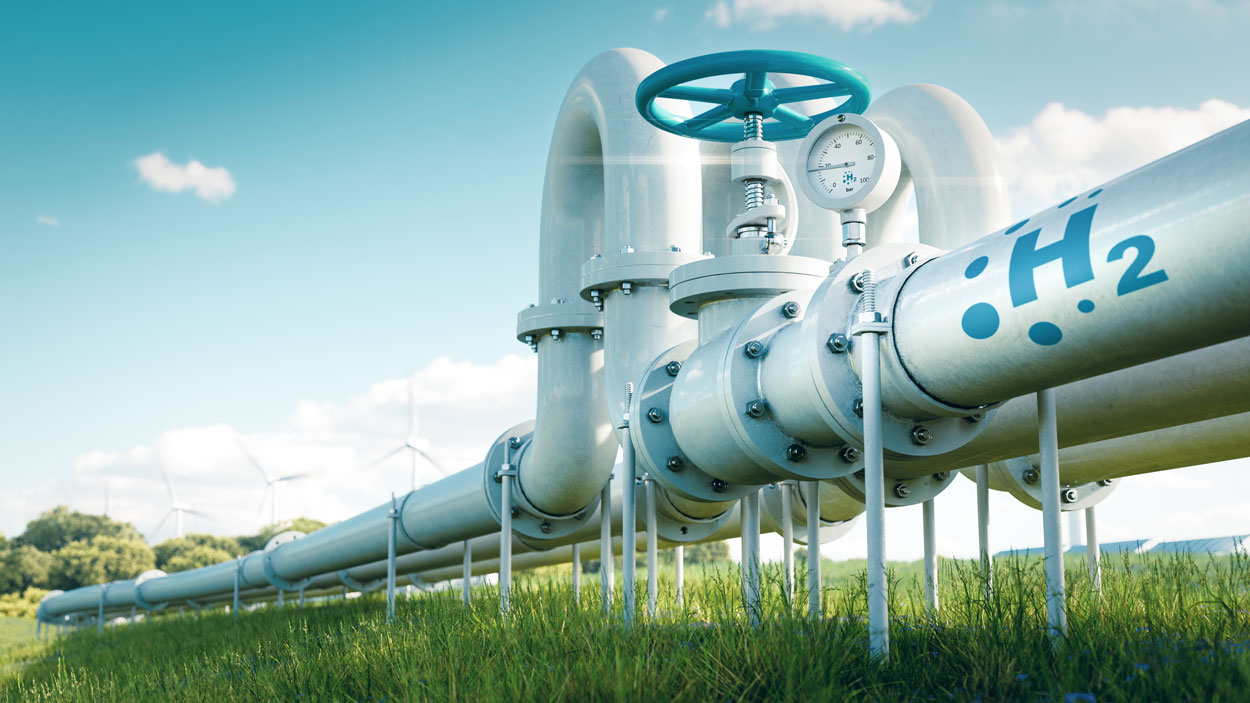Discover the top web design strategies tailored specifically for Calgary oil & gas companies.
In today’s digital age, having an effective website is crucial for businesses in every industry. This is particularly true for Calgary oil and gas companies, who need to showcase their expertise and attract potential investors and clients from around the world. In this article, we will explore the top web design strategies that can help these companies succeed in the online realm.
What is Calgary Oil & Gas Web Design?
Calgary oil and gas web design refers to the art and science of creating visually appealing and user-friendly websites specifically tailored to the needs of companies operating in the energy sector. It involves strategically positioning content, incorporating industry-specific features, and creating a seamless user experience for various stakeholders.
When it comes to the oil and gas industry, having a well-designed website is crucial for establishing a strong online presence and attracting potential clients. Calgary oil and gas web design takes into account the unique requirements of companies in this sector, such as showcasing their expertise, highlighting their services, and providing relevant information about their projects and operations.
One of the key aspects of Calgary oil and gas web design is the visual appeal of the website. The design elements, color schemes, and imagery used are carefully chosen to reflect the professionalism and reliability of the company. The website should convey a sense of trust and credibility to visitors, making them more likely to engage with the company and explore its offerings.
In addition to visual appeal, user-friendliness is another important factor in Calgary oil and gas web design. The website should be easy to navigate, with clear and intuitive menus that allow users to find the information they need quickly. This is particularly important for potential clients who may be looking for specific services or solutions offered by the company. A well-designed website ensures that visitors can easily access the desired information, increasing the chances of converting them into leads or customers.
Furthermore, Calgary oil and gas web design incorporates industry-specific features that cater to the unique needs of companies in this sector. For example, the website may include interactive maps showcasing the company’s projects and operations, allowing visitors to explore their geographical reach. It may also feature data visualization tools that present complex information in a visually appealing and easy-to-understand format, helping stakeholders make informed decisions.
Another important aspect of Calgary oil and gas web design is the integration of responsive design principles. With the increasing use of mobile devices, it is essential for websites to be optimized for different screen sizes and resolutions. A responsive design ensures that the website adapts seamlessly to different devices, providing an optimal user experience regardless of whether the visitor is accessing it from a desktop computer, a tablet, or a smartphone.
In conclusion, Calgary oil and gas web design is a specialized field that focuses on creating visually appealing and user-friendly websites for companies operating in the energy sector. It combines elements of design, functionality, and industry-specific features to ensure that the website effectively represents the company’s expertise, attracts potential clients, and provides a seamless user experience. By investing in professional web design services tailored to the unique needs of the oil and gas industry, companies can enhance their online presence and gain a competitive edge in the digital landscape.

Understanding the Calgary Energy Sector Audience
Before diving into web design strategies, it is essential to understand the target audience of Calgary oil and gas companies. In this case, the audience includes potential investors, clients, industry professionals, and other key stakeholders. These individuals are seeking specific information about the company’s offerings, expertise, and track record. Therefore, the website should cater to their needs and provide relevant and up-to-date information.
When it comes to potential investors, they are looking for a comprehensive understanding of the company’s financial health, growth potential, and investment opportunities. They want to assess the company’s profitability, stability, and long-term prospects. Providing detailed financial reports, investment highlights, and growth projections can help instill confidence in potential investors.
Clients, on the other hand, are interested in the company’s capabilities, past projects, and client testimonials. They want to know if the company has successfully delivered similar projects in the past and if they have a solid reputation in the industry. Highlighting case studies, project portfolios, and client testimonials can help showcase the company’s expertise and build trust with potential clients.
Industry professionals, such as engineers, geologists, and technical experts, are interested in the company’s technical capabilities, research and development initiatives, and innovation. They want to know if the company is at the forefront of technological advancements and if they have a strong research and development team. Providing information about ongoing research projects, partnerships with academic institutions, and technological breakthroughs can attract industry professionals and position the company as a leader in the field.
Lastly, other key stakeholders, such as government officials, regulatory bodies, and community members, are interested in the company’s environmental and social responsibility. They want to ensure that the company operates in a sustainable and ethical manner, minimizing its impact on the environment and contributing positively to the local community. Highlighting the company’s sustainability initiatives, community engagement programs, and environmental certifications can help address the concerns of these stakeholders and foster positive relationships.
In conclusion, understanding the target audience of Calgary oil and gas companies is crucial for designing an effective website. By catering to the needs and interests of potential investors, clients, industry professionals, and other key stakeholders, the website can provide the relevant and up-to-date information necessary to build trust, attract business, and foster positive relationships within the Calgary energy sector.
Key Stakeholders in the Oil & Gas Industry
When designing a website for oil and gas companies in Calgary, it is important to identify the key stakeholders in the industry. These stakeholders can include shareholders, employees, suppliers, government agencies, and local communities. Each stakeholder group may have different interests and information needs, so the web design should address these requirements accordingly.
Shareholders are an essential stakeholder group in the oil and gas industry. These individuals or entities invest their money in the company with the expectation of a return on their investment. They are interested in the financial performance of the company, including revenue, profits, and dividends. The website should provide detailed financial reports, annual statements, and investor presentations to keep shareholders informed about the company’s performance.
Employees are another crucial stakeholder group. They are the backbone of any organization and play a vital role in its success. The website should provide information about job opportunities, employee benefits, training programs, and career development opportunities. It should also include employee testimonials and success stories to showcase the company’s commitment to its workforce.
Suppliers are essential partners in the oil and gas industry. They provide the necessary equipment, materials, and services to keep operations running smoothly. The website should have a dedicated section for suppliers, providing information on how to become a supplier, procurement processes, and supplier diversity initiatives. It should also highlight successful collaborations with suppliers and the company’s commitment to fair and ethical business practices.
Government agencies are key stakeholders in the oil and gas industry due to the sector’s significant impact on the economy, environment, and public safety. The website should provide information on regulatory compliance, environmental initiatives, and safety measures implemented by the company. It should also showcase the company’s contributions to the local economy, such as job creation, tax revenue, and community development projects.
Local communities are directly affected by the operations of oil and gas companies. The website should demonstrate the company’s commitment to being a responsible corporate citizen. It should highlight community engagement programs, philanthropic initiatives, and partnerships with local organizations. The website can also feature stories of how the company has positively impacted the lives of community members through job opportunities, education, and social welfare programs.
In conclusion, when designing a website for oil and gas companies in Calgary, it is essential to consider the diverse needs and interests of key stakeholders. By providing relevant and detailed information to shareholders, employees, suppliers, government agencies, and local communities, the website can effectively communicate the company’s values, achievements, and commitment to sustainable growth.

Interesting Statistics and Datapoints for the Energy Sector and Web Design
- The global oil and gas industry is expected to spend $1.9 billion on digital transformation by 2021.
- In 2020, 87% of oil and gas companies reported that they had increased their investment in digital technologies.
- The use of mobile devices to access the internet has increased significantly in recent years, with mobile devices accounting for 52.2% of all website traffic worldwide in 2018.
- In 2020, 61% of internet users accessed the internet using a mobile device.
- The average time spent on a website is 15 seconds.
- 38% of people will stop engaging with a website if the content or layout is unattractive.
- 88% of online consumers are less likely to return to a site after a bad experience.
- 94% of first impressions of a website are design-related.
- 75% of website credibility comes from design.
- 47% of website visitors expect a website to load in 2 seconds or less.
- A 1-second delay in page load time can result in a 7% reduction in conversions.
- 70% of website visitors abandon pages that take longer than 3 seconds to load.
- 57% of internet users say they won’t recommend a business with a poorly designed website on mobile.
- 75% of consumers judge a company’s credibility based on its website design.
- 48% of people cited a website’s design as the number one factor in deciding the credibility of a business.
Sources:
- https://www.ey.com/en_gl/oil-gas/how-digital-technology-is-transforming-the-oil-and-gas-industry
- https://www2.deloitte.com/content/dam/Deloitte/us/Documents/energy-resources/us-er-oil-gas-digital-maturity-survey-2020.pdf
- https://www.statista.com/statistics/277125/share-of-website-traffic-coming-from-mobile-devices/
- https://www.nngroup.com/articles/how-long-do-users-stay-on-web-pages/
- https://www.bluecorona.com/blog/50-web-design-stats-to-help-you-build-a-better-website-infographic
- https://www.sweor.com/firstimpressions
- https://www.thinkwithgoogle.com/marketing-resources/data-measurement/mobile-page-speed-new-industry-benchmarks/
- https://www.socpub.com/articles/2017-mobile-web-usability-stats-14835
- https://www.webfx.com/blog/web-design/10-web-design-stats/
- https://www.bluecorona.com/blog/50-web-design-stats-to-help-you-build-a-better-website-infographic
Tailoring Web Design to Different Audience Segments
When designing a website for oil and gas companies in Calgary, it is important to consider the different segments within the target audience. For example, potential investors may be interested in financial reports, while clients may be more focused on project portfolios and case studies. By tailoring the web design to these different segments, companies can ensure that each stakeholder group finds the information they need easily and efficiently.
The Importance of User-Centric Design in the Energy Sector
User-centric design should be at the forefront of web design strategies for Calgary oil and gas companies. A user-centric design considers the needs, preferences, and behaviors of the target audience and creates a website that caters to them. This includes intuitive navigation, clear and concise content, and visually appealing layouts. By prioritizing user experience, companies can increase user engagement and ultimately drive business growth.

Modern Design Trends for the Oil & Gas Sector
When it comes to web design, staying up to date with modern trends is essential to create a visually appealing and impactful website. In the oil and gas sector, some modern design trends include:
- Minimalistic Design for Clear Messaging
- Dynamic Infographics and Data Visualization
- Mobile-First Design for On-the-Go Stakeholders
Minimalistic design allows for clear messaging by removing unnecessary clutter and focusing on essential information. This creates a visually appealing and user-friendly website that is easy to navigate and understand.
Dynamic infographics and data visualization are effective ways to present complex information in a visually engaging manner. Calgary oil and gas companies can leverage these design elements to communicate data-driven insights and showcase their expertise to potential clients and investors.
With the increasing use of smartphones and tablets, it is crucial for websites to be mobile-friendly. A mobile-first design approach ensures that the website is optimized for smaller screens and provides a seamless user experience for stakeholders who are always on the go.
Tips for High-End Web Design in the Energy Sector
- Leveraging High-Quality Imagery and Video Content
- Integrating Interactive Elements for Engagement
- Prioritizing User Experience (UX) and User Interface (UI) Design
High-quality imagery and video content can make a significant impact on a website’s design. By using professional photographs, videos, and 3D animations, Calgary oil and gas companies can enhance their brand image and captivate visitors. Additionally, interactive elements such as virtual tours and interactive maps can provide an immersive experience and increase user engagement.
User experience (UX) and user interface (UI) design are crucial components of high-end web design. Calgary oil and gas companies should focus on creating intuitive navigation, clear and concise content, and visually appealing layouts. Understanding the target audience’s needs and preferences is key to designing a website that meets their expectations.
Why Managed Hosting is Important for Oil & Gas Websites
Managed hosting services are essential for oil and gas websites as they provide reliable and secure hosting solutions. With managed hosting, companies can benefit from constant monitoring, regular backups, and enhanced cybersecurity measures. This ensures that the website remains accessible and protected from potential threats, giving stakeholders peace of mind when accessing critical information.
What Digital Marketing Strategies Work Best for the Energy Sector?
Digital marketing is an integral part of promoting oil and gas companies’ websites. Some effective digital marketing strategies for the energy sector include:
- Search engine optimization (SEO)
- Pay-per-click (PPC) advertising
- Social media marketing
Search engine optimization involves optimizing a website’s content and structure to improve its visibility in search engine results. By targeting relevant keywords and creating valuable content, oil and gas companies can attract organic traffic and generate leads.
Pay-per-click advertising allows companies to display targeted ads on search engines and social media platforms, reaching potential stakeholders who are actively searching for relevant information. This strategy can increase brand visibility and drive targeted traffic to the website.
Social media marketing is a powerful tool for engaging with stakeholders and promoting the company’s brand. Calgary oil and gas companies can leverage social media platforms to share industry news, updates, and thought leadership content, driving traffic to their website and increasing brand awareness.
Integrating Interactive Elements for Engagement
Integrating interactive elements into oil and gas websites can significantly enhance user engagement. These elements can include interactive maps, calculators, and virtual tours. By providing interactive and immersive experiences, companies can keep visitors engaged and increase the likelihood of conversions and meaningful interactions.
Prioritizing User Experience (UX) and User Interface (UI) Design
User experience (UX) and user interface (UI) design play a vital role in ensuring the effectiveness of oil and gas websites. UX design focuses on creating an intuitive and seamless user experience, while UI design relates to the visual and interactive elements of the website. By prioritizing these design aspects, companies can create websites that are easy to navigate, visually appealing, and deliver a positive user experience.
Embracing New Technologies in Web Design
In today’s digital landscape, new technologies are continually emerging, and it is important for oil and gas companies to embrace these innovations in their web design. Some examples of new technologies that can be incorporated into web design include:
- The Rise of Augmented Reality (AR) and Virtual Reality (VR) in Web Design
- AI-Powered Chatbots for Enhanced User Support
- The Role of Cloud Solutions in Website Performance
Augmented reality (AR) and virtual reality (VR) can be used to create immersive experiences for website visitors. By incorporating these technologies, oil and gas companies can showcase their facilities, equipment, and projects in a virtual environment, providing stakeholders with a unique and engaging experience.
AI-powered chatbots can enhance user support on oil and gas websites by providing quick and automated responses to frequently asked questions, resolving queries, and guiding visitors through the website. This technology can streamline customer support processes and improve overall user satisfaction.
Cloud solutions are essential for website performance and scalability. By leveraging cloud hosting services, oil and gas companies can ensure that their websites can handle high traffic volumes, provide fast loading times, and accommodate future growth.
FAQ: Frequently Asked Questions
1. Can I design my oil and gas website in-house?
While it is possible to design your oil and gas website in-house, it is recommended to work with professional web design agencies that specialize in the energy sector. These agencies have the expertise and industry knowledge to create visually appealing, user-friendly, and conversion-focused websites that align with your business objectives.
2. How long does it take to design and develop an oil and gas website?
The timeline for designing and developing an oil and gas website can vary depending on the complexity of the project. On average, it can take several weeks to a few months to complete the entire process, from initial concept development to final launch. Working closely with your web design agency and providing timely feedback can help ensure a smooth and efficient process.
3. How often should oil and gas websites be updated?
Oil and gas websites should be regularly updated to ensure that the content remains relevant and up to date. This includes updating project portfolios, news sections, and any other information that may change over time. Additionally, regular website maintenance, including security updates and performance optimizations, is crucial to providing a seamless user experience and protecting against potential threats.
As Calgary oil and gas companies continue to navigate the digital landscape, implementing these top web design strategies can give them a competitive edge. By creating visually appealing, user-centric, and technologically advanced websites, these companies can attract potential investors, engage with key stakeholders, and effectively communicate their expertise and offerings to a global audience.
